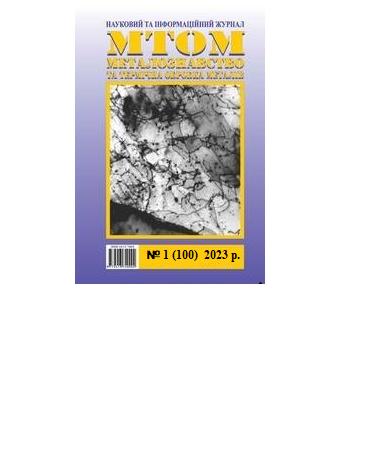DETERMINATION OF RESIDUAL STRESSES IN PIPES
DOI:
https://doi.org/10.30838/J.PMHTM.2413.280323.8.939Keywords:
residual stresses, M.M. Davydenko’s method, tangential and axial residual stressesAbstract
During production, operation, transportation, and aging of finished products, stresses occur in the pipe metal. As a rule, these residual stresses affect the quality of pipes. The presence of residual stresses in products can cause brittle fracture, cracking due to corrosion, reduced elasticity, warping, etc. The development of methods for managing residual stresses in metals and products is the realization of a powerful reserve for improving the quality of metal products, which means increasing the reliability of machinery. The question arises as to which method, convenient in production conditions, should be used to assess residual stresses. A simple and affordable method for estimating residual stresses is needed in production conditions. This paper presents a simplified method for estimating residual stresses in pipes. The purpose of the work is to improve and present a methodology for estimating tangential and axial residual stresses in cold-formed pipes and tubes after heat treatment according to the method of M.M. Davydenko. Research methods: M.M. Davydenko's method for cutting rings and cutting strips from pipes. Calculation of residual stresses. Results. The method for estimation of tangential and axial residual stresses in pipes after cold deformation and after heat treatment is improved and presented. The formulas for calculating residual stresses are given. Practical value. Pipe plants need to estimate residual stresses to develop technological processes for the manufacture of new types of pipes and to meet pipe standards. The improved and presented methodology will help manufacturers in assessing residual stresses. Conclusions. Modern methods for assessing residual stresses have been considered. A methodology for calculating tangential and axial residual stresses according to M.M. Davydenko by cutting rings and cutting strips from the metal of the studied pipes is presented. The methodology is officially registered, which allows it to be used for official assessment of pipe quality.
Downloads
Published
Issue
Section
License
Authors that are published in this journal agree to follow the conditions:
Authors reserve the right to the authorship of his work and cede the right to the journal of first publication of this work on conditions of the license under the Creative Commons Attribution License, which allows others to distribute it freely with the obligatory reference to the author of the original work and the first publication of the work in this journal.

